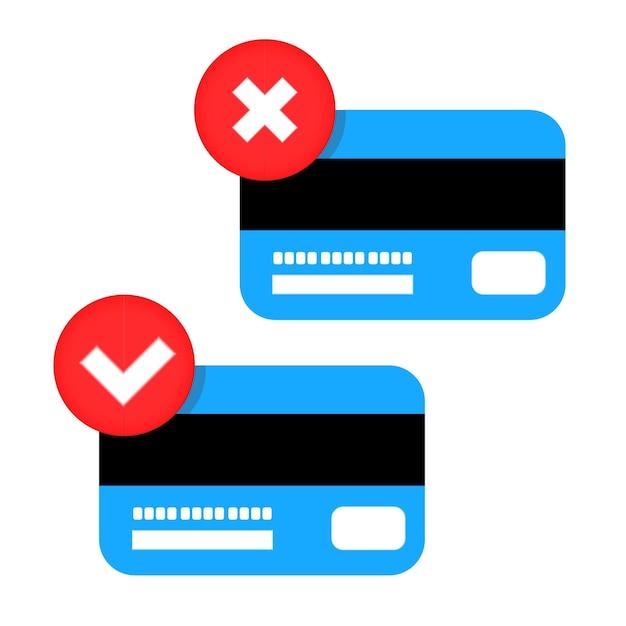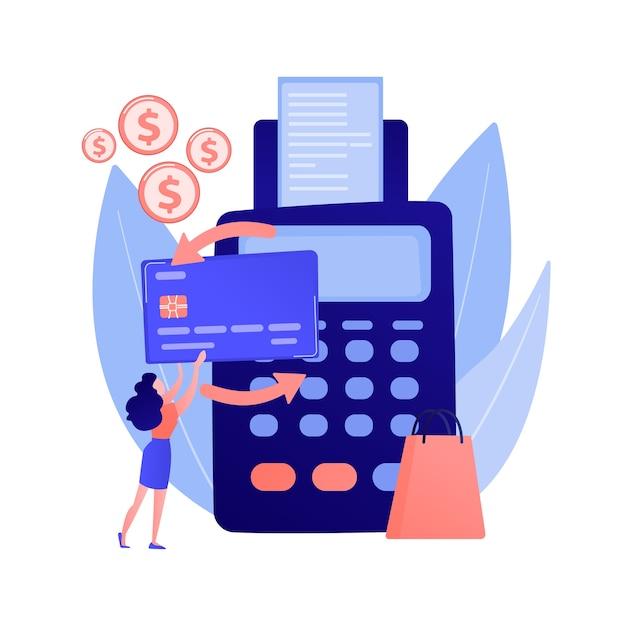Do you own a business and accept credit card payments? If yes, then you must have heard of tiered credit card processing. It is a pricing model used by most payment processors to charge merchants for processing credit card transactions.
Tiered pricing charges a different percentage rate for each type of credit card transaction, which usually includes three tiers – qualified, mid-qualified, and non-qualified transactions. Sounds complicated? Don’t worry; we will explain everything you need to know about tiered credit card processing, its advantages, disadvantages, and how it compares to other pricing models.
In this blog post, we will also explore what is level 3 credit card processing, what are the tiers of credit card processing, and how they impact your business. Additionally, we will discuss the Visa interchange rates and how they impact tiered pricing.
So whether you are a business owner looking to accept credit card payments for the first time or an experienced entrepreneur looking for ways to save money on transaction fees, this blog post is for you. Let’s dive in and discover everything you need to know about tiered credit card processing!
Understanding Tiered Credit Card Processing
Tiered credit card processing is a pricing model used by some payment processors. It is a way to charge merchants different rates for processing different types of credit card transactions. The idea behind this pricing model is to simplify the fees by grouping transactions into different tiers.
How does it work
There are typically three tiers in this model, the qualified tier, mid-qualified tier, and non-qualified tier. The qualified tier (lowest rate) applies to transactions where the credit card is present, swiped, or dipped into a chip reader. Mid-qualified (intermediate rate) applies to keyed transactions, such as mail orders or phone orders, and non-qualified (highest rate) applies to transactions where the card is not present, such as online orders or recurring billing.
Pros and Cons
One of the advantages of tiered pricing is that it simplifies the pricing structure for merchants. However, it can also be difficult to determine which tier a transaction falls into, leaving merchants vulnerable to inconsistent pricing.
Additionally, tiered pricing can lead to higher costs for some merchants, especially those who process a lot of mid-qualified and non-qualified transactions. It’s important to compare different pricing models and understand your business’s payment processing needs before making a decision.
Overall, tiered credit card processing is a pricing model worth considering if you understand the tiers and their rates. The simplified pricing structure can be beneficial, but it’s important to also consider the potential for higher costs and inconsistent pricing. Make sure to do your research and compare different pricing models before selecting one for your business.
Tiered Pricing: Understanding the Tier Pl Category
If you’ve done research on credit card processing, you’ve likely come across the term “tiered pricing.” Tiered pricing refers to the different pricing plans that processors offer, and it can be a bit confusing to understand.
One of the tiers that processors use is called “tier pl.” Tier pl stands for “qualified plus,” and it is one of the middle tiers in the pricing structure.
What is Tier Pl
Tier pl pricing is for transactions that fall somewhere in between “qualified” and “mid-qualified.” Qualified transactions are typically those that are swiped and involve a standard credit card, while mid-qualified transactions may involve a rewards card or a card with a higher processing fee.
Transactions that fall into the tier pl category are typically those that are processed manually, such as when a card number is keyed in instead of being swiped. This can include transactions made over the phone or via an online store.
How Does Tier Pl Pricing Work
Under tiered pricing, each transaction will be classified based on the type of card used, the way it is processed, and the risk level associated with the transaction. The processor will then apply a fee based on the transaction’s tier.
Tier pl pricing will typically be higher than qualified pricing but lower than mid-qualified or non-qualified pricing. The exact rate will vary depending on the processor, but you can expect to pay an additional 0.5% – 1% on top of the qualified rate for tier pl transactions.
Should You Choose Tiered Pricing with Tier Pl
Whether or not you choose tiered pricing and tier pl specifically will depend on your business needs and the types of transactions you typically process. If you primarily process qualified transactions, you may be better off with a flat rate pricing plan. However, if your business processes a mix of transaction types, tiered pricing may be a good option to help you save money on fees.
Regardless of your pricing plan, always make sure to read the fine print and understand all the fees involved before signing up with a processor. And if you’re ever unsure about something, be sure to ask your processor – they’re there to help you find the best pricing plan for your business.
Tier at Ride: How it Works
If you’re a service provider or business owner who heavily relies on transactions and payments made through credit cards, then having a good understanding of how the tier at ride works is essential. In this section, we will discuss the ins and outs of tiered credit card processing, specifically the tier at ride.
What is Tier at Ride
Tier at ride is one of the tiers used in the credit card processing system. It’s a pricing model in which credit card transactions are classified in three or more tiers, depending on the type of credit card used and the manner in which the transaction was carried out. This tier includes all card-present transactions where the credit card was swiped, the chip was used, or other physical card verification methods.
How Does it Work
The tier at ride consists of three tiers: Qualified, Mid-Qualified, and Non-Qualified. Transactions that fall under the Qualified tier are the cheapest, while Non-Qualified transactions cost the most. In simple terms, transactions are categorized according to their risk level. Qualified transactions are considered the least risky, while Non-Qualified transactions carry the most risk.
Understanding the Costs
The cost of a credit card transaction will differ depending on the tier it falls under. The Qualified tier carries the least risk and is therefore the cheapest, while the Non-Qualified tier carries high risk and comes with higher fees. So, if a merchant processes a credit card transaction that is in the Non-Qualified tier, they will be charged the higher fee that is associated with that risk level.
The Benefits of Tier at Ride
Tiered credit card processing is beneficial in that it allows businesses and service providers to differentiate between different levels of risk and price their services accordingly. The most significant benefit is that a business can save money by structuring its transactions so that they fall under the Qualified tier.
Tier at ride is a revolutionary pricing model that can save merchants money while helping them manage risk. Understanding how this model works is essential if you want to maximize your business’s savings on credit card processing fees. By using this model, merchants can price their services more competitively while still enjoying the benefits of credit card payments.
Visa Interchange Rates
Visa interchange rates are an important factor to consider when it comes to tiered credit card processing. These rates are the fees that Visa charges merchants for processing credit and debit card transactions. The fee amount is determined by various factors such as the type of card being used, the merchant’s industry category, and the transaction amount.
Understanding Visa Interchange Rates
Visa interchange rates can vary depending on several factors. These factors include the type of card being used, the merchant’s industry category, and the transaction amount. For example, a Visa debit card used at a gas station will have a different interchange rate as compared to a Visa credit card used at a restaurant.
How Visa Interchange Rates Impact Merchants
Visa interchange rates can have a significant impact on merchants, especially small businesses. Merchants must pay these fees for every credit and debit card transaction they process, and these fees can quickly add up. This is why some merchants opt for a tiered credit card processing system to help them manage their payment processing costs.
Tips for Reducing Visa Interchange Fees
There are several ways merchants can reduce their Visa interchange fees. For starters, they can ensure that they are using the correct merchant category code (MCC) when processing transactions. Merchants can also encourage customers to use lower-cost payment methods such as PIN-debit cards.
Visa interchange rates are an essential aspect of the credit card processing industry. Merchants must understand these rates and how they impact their business. By using a tiered credit card processing system and following best practices to reduce interchange fees, merchants can minimize their payment processing costs and focus on growing their business.
What is a Tiered Processing Fee
When you start accepting credit card payments, you may come across the term “tiered processing fee.” But what exactly does it mean?
Definition of Tiered Processing Fee
To put it simply, a tiered processing fee is a pricing model used by credit card processors. Instead of charging a flat rate for every transaction, the fee is broken down into different tiers or categories. Each tier has its own rate, which is determined by the card type, how the transaction is processed, and other factors.
Understanding the Tiers
Tiered processing fees typically have three tiers: qualified, mid-qualified, and non-qualified.
-
Qualified Tier – This is usually the lowest tier, reserved for transactions that meet specific criteria. For instance, transactions where the customer swipes their card physically and signs the sales receipt may qualify as “qualified” transactions.
-
Mid-Qualified Tier – This tier is a bit higher than the qualified tier and includes transactions that don’t meet all the requirements for “qualified.” Transactions where the customer inputs their card details manually or processes the transaction online may fall into this category.
-
Non-Qualified Tier – Finally, this tier is the highest, including transactions that don’t meet any of the criteria for the other tiers. Rewards cards or corporate cards typically fall into this category.
Why Tiered Processing Fees Are Used
You might wonder why credit card processors use tiered processing fees. The answer is simple – it allows processors to charge more for certain transactions and card types while keeping costs lower for others. By breaking down rates into tiers, the processor can charge merchants more for higher-priced transactions and card types, which typically cost more to process.
To sum up, a tiered processing fee is a pricing model used by credit card processors to break down the fees into different tiers or categories. Each tier has its own rate, determined by factors like the type of card used and how the transaction is processed. Understanding the tiers can help you make sense of the fees charged for each transaction.
What is Level 3 Credit Card Processing
If you’re a business that often completes B2B transactions, you may have come across the term “Level 3 credit card processing.” Unlike Level 1 and Level 2 processing, Level 3 processing requires additional information and documentation to be submitted with credit card transactions.
What Makes Level 3 Processing Different
Level 1 processing is the most basic type, typically used for transactions between consumers and businesses. Level 2 processing is required for transactions between businesses, particularly if they are tax-exempt.
Level 3, on the other hand, goes even further by requiring a variety of additional information, including:
- Invoice numbers
- Shipping and handling information
- Item descriptions and product codes
- Quantity of items purchased
Benefits of Implementing Level 3 Processing
While implementing Level 3 processing may require additional work upfront, it ultimately provides a number of benefits for businesses, particularly those that handle frequent B2B transactions:
- Lower processing fees: Because Level 3 processing provides a higher level of detail and information, it’s considered lower risk for banks and ultimately results in lower processing fees.
- Increased security: By requiring additional information, Level 3 processing helps to reduce the risk of fraud and chargebacks.
- Improved tracking and reporting: With more detailed information in each transaction, businesses can more easily track and report on their financial data.
Implementing Level 3 processing does require some additional work, such as incorporating new software and training employees on the new requirements. However, the benefits can outweigh these initial costs for businesses that frequently engage in B2B transactions.
If you’re interested in implementing Level 3 processing for your business, be sure to speak with your payment processor to learn more about the requirements and steps involved.
What are the Tiers of Credit Card Processing
If you are a merchant accepting credit card payments, you need to understand how your transactions are being processed. Credit card processing involves several steps, and the fees associated with each step can vary depending on the tier of processing. Here are the three tiers of credit card processing:
Tier 1: Qualified Transactions
Qualified transactions are the most straightforward type of credit card processing. These are transactions where the credit card is physically swiped, and the cardholder is present when the transaction takes place. The payment processing fee for qualified transactions is the lowest, typically ranging from 1.5% to 2.5% of the transaction amount.
Tier 2: Mid-Qualified Transactions
Mid-qualified transactions occur when the card is not swiped physically, such as when a merchant processes a transaction over the phone or online. Additionally, transactions that require more processing time, such as transactions that involve rewards or travel cards, may also fall under the mid-qualified tier. The payment processing fee for mid-qualified transactions is higher than that of qualified transactions, typically ranging from 2.5% to 3.5%.
Tier 3: Non-Qualified Transactions
Non-qualified transactions are the most expensive tier of credit card processing. These transactions are considered high-risk because they involve greater processing time or present more risk of fraud. Non-qualified transactions may include government or corporate cards, international transactions, or transactions with increased potential for chargebacks. The payment processing fee for non-qualified transactions is the highest, typically ranging from 3.5% to 4.5%.
In conclusion, understanding the tiers of credit card processing is essential for merchants accepting credit card payments. By understanding how each transaction is processed and the associated fees, merchants can make informed decisions to minimize their payment processing costs.
What are the disadvantages of tiered credit card processing
If you’re considering tiered credit card processing, there are some drawbacks you should be aware of before diving in. In this section, we’ll explore the disadvantages of using this pricing model.
Increased costs
One of the major disadvantages of tiered credit card processing is that it can be more expensive than other pricing models. With tiered pricing, you’re charged different rates depending on the type of transaction you’re processing. This can be confusing and can lead to increased costs over time, especially if you’re not careful.
Lack of transparency
Another downside of tiered pricing is that it can be difficult to understand. Unlike other pricing models, which offer more transparency about how fees and charges are calculated, tiered pricing can be opaque. This can make it hard to know exactly what you’re paying and why.
Higher rates for certain transactions
With tiered pricing, you’ll usually pay higher rates for certain types of transactions, such as rewards-based credit cards. This can affect your bottom line over time, especially if you’re processing a lot of these types of transactions.
Limited scalability
Finally, tiered pricing may not be the best choice for businesses that are looking to scale quickly. As your transaction volume increases, tiered pricing may become less cost-effective and more difficult to manage.
Overall, while tiered credit card processing may work well for some businesses, it’s important to weigh the drawbacks against the benefits before making a final decision. Be sure to do your research and speak to a financial expert to determine whether tiered pricing is the right choice for you.



